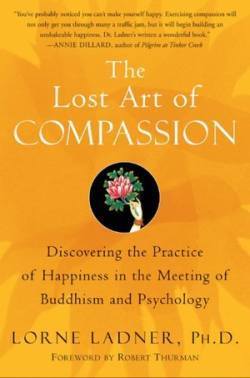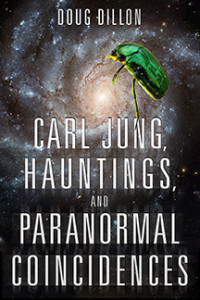Doug Dillon's Blog, page 52
December 18, 2015
Compassion Stories in Buddhism
Excellent work, so much so that I had to do a review and post it for the benefit of others. Highly recommended.
A Book Review
Author – Lorne Ladner, Ph.D.
A Washington, D.C. clinical psychologist in private practice
Director of the GUHYASAMAJA Buddhist Center in Northern Virginia
Harper San Francisco, 304 p.
Even though author Lorne Ladner is Buddhist and combines concepts from his spiritual practice with professional psychological guidance, you don’t have to be Buddhist to find value in his words. This book is a beautiful blend of East and West that truly gets to the heart of how the implementation of compassion in one’s life can lead to happiness.
Essentially, Ladner presents compassion as a vital part of psychological stability and viable spiritual practice. Smoothly written, this book plunges right to the heart of daily living and shows how working on relationships of all kinds through the use of compassion ends up being beneficial to all.
Ladner uses examples from his own life and offers readers very practical exercises in the enhancement of their compassionate outlooks. These sample chapter titles give you a taste for what he has to say: “Compassion for Yourself”; “Seeing Through Projections”; and “Joyfully Losing an Argument”.
To be perfectly honest, I found this book of such tremendous value that I took all the underlining I did in it and created a little mini-handbook that I still refer to periodically. The author’s words rang so true for me that I occasionally send quotes from his work out over Twitter. In closing, I’ll leave you with these words from Ladner, my favorite:
“Heartfelt kindness toward someone who has just treated you badly has the clean, pure feeling of a cool creek in the high mountains.”
Click here to find this book online.
If you found this article useful, and are interested in the edgier aspects of the mind and spirit, you might find my latest book of interest.
Titled, as you can see, Carl Jung, Hauntings and Paranormal Coincidences, it uses the great psychiatrist’s own paranormal experiences as jumping off points for some of my own life events and those of other very reliable people.
Listed below are direct book links to some of the larger book retail outlets in the English-speaking world where you can find it:
Amazon.com, Amazon Canada, Amazon UK, Amazon India, Amazon Australia, Barnes and Noble, Kobo (Canada)
Compassion Stories
Excellent work, so much so that I had to do a review and post it for the benefit of others. Highly recommended.
A Book Review
Author – Lorne Ladner, Ph.D.
A Washington, D.C. clinical psychologist in private practice
Director of the GUHYASAMAJA Buddhist Center in Northern Virginia
Harper San Francisco, 304 p.
Even though author Lorne Ladner is Buddhist and combines concepts from his spiritual practice with professional psychological guidance, you don’t have to be Buddhist to find value in his words. This book is a beautiful blend of East and West that truly gets to the heart of how the implementation of compassion in one’s life can lead to happiness.
Essentially, Ladner presents compassion as a vital part of psychological stability and viable spiritual practice. Smoothly written, this book plunges right to the heart of daily living and shows how working on relationships of all kinds through the use of compassion ends up being beneficial to all.
Ladner uses examples from his own life and offers readers very practical exercises in the enhancement of their compassionate outlooks. These sample chapter titles give you a taste for what he has to say: “Compassion for Yourself”; “Seeing Through Projections”; and “Joyfully Losing an Argument”.
To be perfectly honest, I found this book of such tremendous value that I took all the underlining I did in it and created a little mini-handbook that I still refer to periodically. The author’s words rang so true for me that I occasionally send quotes from his work out over Twitter. In closing, I’ll leave you with these words from Ladner, my favorite:
“Heartfelt kindness toward someone who has just treated you badly has the clean, pure feeling of a cool creek in the high mountains.”
Click here to find this book online.
If you found this article useful, and are interested in the edgier aspects of the mind and spirit, you might find my latest book of interest.
Titled, as you can see, Carl Jung, Hauntings and Paranormal Coincidences, it uses the great psychiatrist’s own paranormal experiences as jumping off points for some of my own life events and those of other very reliable people.
Listed below are direct book links to some of the larger book retail outlets in the English-speaking world where you can find it:
Amazon.com, Amazon Canada, Amazon UK, Amazon India, Amazon Australia, Barnes and Noble, Kobo (Canada)
December 17, 2015
Paranormal Phenomena Uncovered
On my walk around the neighborhood this morning shortly before sunrise, a brilliant full moon hung low in the west just above a tall, billowing thunder head. Illuminated by the unseen star we call our sun, it struck me how thoroughly many of us human beings tend to divorce ourselves from the natural world as we becoming increasingly technologically advanced. Not a new concept, of course, but this morning that thought magnified the perceptions I had on another walk just a few days ago.
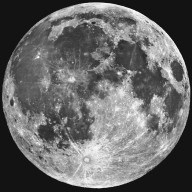 Before I continue, here’s a moon picture to get you in the mood, courtesy of NASA. If you haven’t been to their website before, give it a try and play around with the universe for a while.
Before I continue, here’s a moon picture to get you in the mood, courtesy of NASA. If you haven’t been to their website before, give it a try and play around with the universe for a while.
On that other walk I mentioned, it was right after the break of dawn. So quiet. Unusually quiet. No wind. Nobody up yet. No other walkers. No dogs barking. Totally still. Then an owl started hooting nearby, followed by the continuous throaty chirping of a tree frog across the street.
 Here’s one that sometimes lives in a potted plant my wife keeps just outside our front door.
Here’s one that sometimes lives in a potted plant my wife keeps just outside our front door.
A toad joined in the chorus with his own unique song and within seconds, a few birds sang their versions of wake-up calls.
Five minutes later, birds everywhere seemed to awaken and filled the air with special appreciations of the morning. All that lasted for about ten minutes and then stopped almost as if orchestrated.
After a short gap in sound, somewhere a dog barked just as a car with its lights on rounded a curve in the road coming towards me. In the far distance, a truck engine revved up. Next, a hollow crash like a dumpster being dropped disturbed the peace as only a dropped dumpster can. Also in the distance, the murmur of traffic on nearby I-4 somehow quickly became apparent—time for our civilization to overshadow the natural world.
In thinking now about those two walks in the early morning, I’ve been increasingly comparing them to brief episodes where I’ve experienced something that might be considered supernatural or paranormal.
My conclusion is actually a reinforcement of something I’ve believed for a long time now. For what it’s worth, here it is. Just as how many of us in the developed world find ourselves separated from nature, for an even longer time, we have increasingly separated ourselves from a part of nature that we now call the supernatural or paranormal. In lifting ourselves out of superstition and ignorance, we as a species have also cut ourselves off from things that are a very natural and normal part of our heritage.
So, do yourself a favor. The next time you see the moon or hear an owl hoot, see if any of what I’ve said touches a place deep down inside you.
If you enjoyed this article and would like to read more about this subject, you might like to take a look at one of my latest books.
Titled, Carl Jung, Hauntings and Paranormal Coincidences, it uses the great psychiatrist’s own paranormal experiences as jumping off points for some of my own life events and those of other very reliable people. Many of these stories take place in St. Augustine.
Listed below are direct book links to some of the larger book retail outlets in the English-speaking world where you can find it:
Amazon.com, Amazon Canada, Amazon UK, Amazon India, Amazon Australia, Barnes and Noble, Kobo (Canada)
December 15, 2015
A Wonderful St. Augustine Christmas
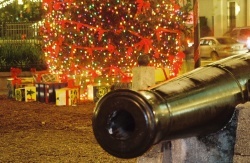 From November through January of every year in Florida, the old city of St. Augustine lights up for the holiday season. Titled, “The Nights of Lights,” this long-term event bathes trees, historic buildings, homes, parks, bridges, inns and restaurants in the warm glow of little white lights.
From November through January of every year in Florida, the old city of St. Augustine lights up for the holiday season. Titled, “The Nights of Lights,” this long-term event bathes trees, historic buildings, homes, parks, bridges, inns and restaurants in the warm glow of little white lights.
This is a beautiful, fun time in this ancient city when stores, art galleries and restaurants stay open late and people come from all over the world to stroll the streets that date back to the time when Spain ruled Florida. Go there and tour St. Augustine’s treasure-house of historic buildings by day and then immerse yourself in the wondrous illumination at night. You won’t regret it.
For YouTube videos of this event, Click Here and Here.
Click Here for more detailed information and stay tuned for other blogs coming soon that will point out some of the specific events that occur in America’s Oldest City during its illuminated holiday season.
Click on any of the following for further information on the city of St. Augustine:
A Calendar of Events for St. Augustine
December 13, 2015
A Florida Pirate Story – An Execution – Almost
 In the early days of old St. Augustine, Florida, pirates haunted the waters surrounding that Spanish colonial city.
In the early days of old St. Augustine, Florida, pirates haunted the waters surrounding that Spanish colonial city.
They attacked many times, stealing everything they could, burning the town and its wooden fort, and killing Spanish citizens. It got so bad that the colonial government began building a stone fort in 1672, within which all 1,000 inhabitants could take refuge in times of danger.
Unfortunately, it took twenty-three years to build what became known as the Castillo de San Marcos. 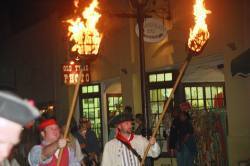 In the meantime, government officials, soldiers and regular folks kept a wary eye on Matanzas Bay and beyond to the Atlantic Ocean.
In the meantime, government officials, soldiers and regular folks kept a wary eye on Matanzas Bay and beyond to the Atlantic Ocean.
Pirate paranoia was a constant state of mind. Spain’s continuing conflicts with the British didn’t help this situation at all. Attack by warships from the Bahamas could happen at anytime.
In 1684, such a British fleet started out for St. Augustine but lost ships in a storm.
The fleet commander, Thomas Jingle, aborted his mission but decided to take his remaining vessels just north of the city near the St. Johns River in order to restore his supplies of 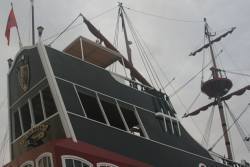 food and water.
food and water.
What Jingle didn’t realize was how carefully the Spanish kept a watch on that area. Sentinels saw the ships and when a boat from one of them arrived on shore, all the men on board were captured and herded back to St. Augustine. In charge of that boat and it’s small crew of six was a ship’s steward named Andrew Ranson.
Upon their arrival in St. Augustine, the Spanish governor, Juan Marques Cabrera, had the prisoners tortured. He hoped to gain vital details about Captain Jingle’s further plans.
For his trouble, Cabrera got no such information but Ranson’s crew turned on him by saying their leader was indeed a pirate. Exasperated, the governor gave the crew ten years of hard labor and ordered Andrew Ranson to be executed by garrote–slow strangulation from behind. Ranson protested his innocence but to no avail.
 With his back against a pole on his day of execution, Ranson clutched a rosary. Soon, the executioner threaded a rope through the pole, put the loop around Ranson’s neck and slowly turned a handle six times.
With his back against a pole on his day of execution, Ranson clutched a rosary. Soon, the executioner threaded a rope through the pole, put the loop around Ranson’s neck and slowly turned a handle six times.
After twitching for a short while, Ranson ceased moving. Thinking to make sure he had done the job correctly, the executioner gave the handle one more good twist. The result stunned everyone in the crowd. The sturdy rope actually broke.
Immediately, Father Perez de la Mota rushed to the body only to find Ranson still breathing.
Believing a miracle had happened, the priest and his associates rushed the prisoner to a religious sanctuary. The good Father and his associates had actually believed in Ranson’s innocence from the beginning. Because of that, they felt sure their prayers had been answered by God.
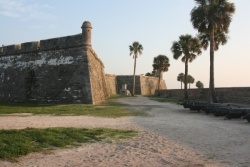
The Castillo de San Marcos
Dazed but happy to be alive, Ranson awoke to a huge controversy.
Governor Cabrera had demanded that his prisoner be returned for another, and final, execution. Father de la Mota in return had refused saying it was the will of God for Ranson to live.
This argument went on for three years until Cabrera was finally transferred. Seeking a compromise acceptable to all, the new governor, Don Diego Losada, offered to give Ranson amnesty if he would live at the construction site of the Castillo (fort) and use his excellent building skills to hurry its completion.
In the end, everyone agreed. Ranson helped to complete the Castillo in 1795 and in 1702, he was granted full freedom for helping to defend St. Augustine against the British.
If you enjoyed this article and would like to read more odd stories, especially about St. Augustine, Florida, you might like to take a look at one of my latest books.
Titled, Carl Jung, Hauntings and Paranormal Coincidences, it uses the great psychiatrist’s own paranormal experiences as jumping off points for some of my own life events and those of other very reliable people. Many of these stories take place in St. Augustine.
Listed below are direct book links to some of the larger book retail outlets in the English-speaking world where you can find it:
Amazon.com, Amazon Canada, Amazon UK, Amazon India, Amazon Australia, Barnes and Noble, Kobo (Canada)
December 12, 2015
Compassion – A Buddhist Perpective
Excellent work, so much so that I had to do a review and post it for the benefit of others. Highly recommended.
A Book Review
Author – Lorne Ladner, Ph.D.
A Washington, D.C. clinical psychologist in private practice
Director of the GUHYASAMAJA Buddhist Center in Northern Virginia
Harper San Francisco, 304 p.
Even though author Lorne Ladner is Buddhist and combines concepts from his spiritual practice with professional psychological guidance, you don’t have to be Buddhist to find value in his words. This book is a beautiful blend of East and West that truly gets to the heart of how the implementation of compassion in one’s life can lead to happiness.
Essentially, Ladner presents compassion as a vital part of psychological stability and viable spiritual practice. Smoothly written, this book plunges right to the heart of daily living and shows how working on relationships of all kinds through the use of compassion ends up being beneficial to all.
Ladner uses examples from his own life and offers readers very practical exercises in the enhancement of their compassionate outlooks. These sample chapter titles give you a taste for what he has to say: “Compassion for Yourself”; “Seeing Through Projections”; and “Joyfully Losing an Argument”.
To be perfectly honest, I found this book of such tremendous value that I took all the underlining I did in it and created a little mini-handbook that I still refer to periodically. The author’s words rang so true for me that I occasionally send quotes from his work out over Twitter. In closing, I’ll leave you with these words from Ladner, my favorite:
“Heartfelt kindness toward someone who has just treated you badly has the clean, pure feeling of a cool creek in the high mountains.”
Click here to find this book online.
If you found this article useful, and are interested in the edgier aspects of the mind and spirit, you might find my latest book of interest.
Titled, as you can see, Carl Jung, Hauntings and Paranormal Coincidences, it uses the great psychiatrist’s own paranormal experiences as jumping off points for some of my own life events and those of other very reliable people.
Listed below are direct book links to some of the larger book retail outlets in the English-speaking world where you can find it:
Amazon.com, Amazon Canada, Amazon UK, Amazon India, Amazon Australia, Barnes and Noble, Kobo (Canada)
December 11, 2015
What is Paranormal?
On my walk around the neighborhood this morning shortly before sunrise, a brilliant full moon hung low in the west just above a tall, billowing thunder head. Illuminated by the unseen star we call our sun, it struck me how thoroughly many of us human beings tend to divorce ourselves from the natural world as we becoming increasingly technologically advanced. Not a new concept, of course, but this morning that thought magnified the perceptions I had on another walk just a few days ago.
 Before I continue, here’s a moon picture to get you in the mood, courtesy of NASA. If you haven’t been to their website before, give it a try and play around with the universe for a while.
Before I continue, here’s a moon picture to get you in the mood, courtesy of NASA. If you haven’t been to their website before, give it a try and play around with the universe for a while.
On that other walk I mentioned, it was right after the break of dawn. So quiet. Unusually quiet. No wind. Nobody up yet. No other walkers. No dogs barking. Totally still. Then an owl started hooting nearby, followed by the continuous throaty chirping of a tree frog across the street.
 Here’s one that sometimes lives in a potted plant my wife keeps just outside our front door.
Here’s one that sometimes lives in a potted plant my wife keeps just outside our front door.
A toad joined in the chorus with his own unique song and within seconds, a few birds sang their versions of wake-up calls.
Five minutes later, birds everywhere seemed to awaken and filled the air with special appreciations of the morning. All that lasted for about ten minutes and then stopped almost as if orchestrated.
After a short gap in sound, somewhere a dog barked just as a car with its lights on rounded a curve in the road coming towards me. In the far distance, a truck engine revved up. Next, a hollow crash like a dumpster being dropped disturbed the peace as only a dropped dumpster can. Also in the distance, the murmur of traffic on nearby I-4 somehow quickly became apparent—time for our civilization to overshadow the natural world.
In thinking now about those two walks in the early morning, I’ve been increasingly comparing them to brief episodes where I’ve experienced something that might be considered supernatural or paranormal.
My conclusion is actually a reinforcement of something I’ve believed for a long time now. For what it’s worth, here it is. Just as how many of us in the developed world find ourselves separated from nature, for an even longer time, we have increasingly separated ourselves from a part of nature that we now call the supernatural or paranormal. In lifting ourselves out of superstition and ignorance, we as a species have also cut ourselves off from things that are a very natural and normal part of our heritage.
So, do yourself a favor. The next time you see the moon or hear an owl hoot, see if any of what I’ve said touches a place deep down inside you.
If you enjoyed this article and would like to read more about this subject, you might like to take a look at one of my latest books.
Titled, Carl Jung, Hauntings and Paranormal Coincidences, it uses the great psychiatrist’s own paranormal experiences as jumping off points for some of my own life events and those of other very reliable people. Many of these stories take place in St. Augustine.
Listed below are direct book links to some of the larger book retail outlets in the English-speaking world where you can find it:
Amazon.com, Amazon Canada, Amazon UK, Amazon India, Amazon Australia, Barnes and Noble, Kobo (Canada)
December 10, 2015
St. Augustine Piracy – A Botched Execution
 In the early days of old St. Augustine, Florida, pirates haunted the waters surrounding that Spanish colonial city.
In the early days of old St. Augustine, Florida, pirates haunted the waters surrounding that Spanish colonial city.
They attacked many times, stealing everything they could, burning the town and its wooden fort, and killing Spanish citizens. It got so bad that the colonial government began building a stone fort in 1672, within which all 1,000 inhabitants could take refuge in times of danger.
Unfortunately, it took twenty-three years to build what became known as the Castillo de San Marcos.  In the meantime, government officials, soldiers and regular folks kept a wary eye on Matanzas Bay and beyond to the Atlantic Ocean.
In the meantime, government officials, soldiers and regular folks kept a wary eye on Matanzas Bay and beyond to the Atlantic Ocean.
Pirate paranoia was a constant state of mind. Spain’s continuing conflicts with the British didn’t help this situation at all. Attack by warships from the Bahamas could happen at anytime.
In 1684, such a British fleet started out for St. Augustine but lost ships in a storm.
The fleet commander, Thomas Jingle, aborted his mission but decided to take his remaining vessels just north of the city near the St. Johns River in order to restore his supplies of  food and water.
food and water.
What Jingle didn’t realize was how carefully the Spanish kept a watch on that area. Sentinels saw the ships and when a boat from one of them arrived on shore, all the men on board were captured and herded back to St. Augustine. In charge of that boat and it’s small crew of six was a ship’s steward named Andrew Ranson.
Upon their arrival in St. Augustine, the Spanish governor, Juan Marques Cabrera, had the prisoners tortured. He hoped to gain vital details about Captain Jingle’s further plans.
For his trouble, Cabrera got no such information but Ranson’s crew turned on him by saying their leader was indeed a pirate. Exasperated, the governor gave the crew ten years of hard labor and ordered Andrew Ranson to be executed by garrote–slow strangulation from behind. Ranson protested his innocence but to no avail.
 With his back against a pole on his day of execution, Ranson clutched a rosary. Soon, the executioner threaded a rope through the pole, put the loop around Ranson’s neck and slowly turned a handle six times.
With his back against a pole on his day of execution, Ranson clutched a rosary. Soon, the executioner threaded a rope through the pole, put the loop around Ranson’s neck and slowly turned a handle six times.
After twitching for a short while, Ranson ceased moving. Thinking to make sure he had done the job correctly, the executioner gave the handle one more good twist. The result stunned everyone in the crowd. The sturdy rope actually broke.
Immediately, Father Perez de la Mota rushed to the body only to find Ranson still breathing.
Believing a miracle had happened, the priest and his associates rushed the prisoner to a religious sanctuary. The good Father and his associates had actually believed in Ranson’s innocence from the beginning. Because of that, they felt sure their prayers had been answered by God.

The Castillo de San Marcos
Dazed but happy to be alive, Ranson awoke to a huge controversy.
Governor Cabrera had demanded that his prisoner be returned for another, and final, execution. Father de la Mota in return had refused saying it was the will of God for Ranson to live.
This argument went on for three years until Cabrera was finally transferred. Seeking a compromise acceptable to all, the new governor, Don Diego Losada, offered to give Ranson amnesty if he would live at the construction site of the Castillo (fort) and use his excellent building skills to hurry its completion.
In the end, everyone agreed. Ranson helped to complete the Castillo in 1795 and in 1702, he was granted full freedom for helping to defend St. Augustine against the British.
If you enjoyed this article and would like to read more odd stories, especially about St. Augustine, Florida, you might like to take a look at one of my latest books.
Titled, Carl Jung, Hauntings and Paranormal Coincidences, it uses the great psychiatrist’s own paranormal experiences as jumping off points for some of my own life events and those of other very reliable people. Many of these stories take place in St. Augustine.
Listed below are direct book links to some of the larger book retail outlets in the English-speaking world where you can find it:
Amazon.com, Amazon Canada, Amazon UK, Amazon India, Amazon Australia, Barnes and Noble, Kobo (Canada)
December 9, 2015
Christmas in St. Augustine, Florida
 From November through January of every year in Florida, the old city of St. Augustine lights up for the holiday season. Titled, “The Nights of Lights,” this long-term event bathes trees, historic buildings, homes, parks, bridges, inns and restaurants in the warm glow of little white lights.
From November through January of every year in Florida, the old city of St. Augustine lights up for the holiday season. Titled, “The Nights of Lights,” this long-term event bathes trees, historic buildings, homes, parks, bridges, inns and restaurants in the warm glow of little white lights.
This is a beautiful, fun time in this ancient city when stores, art galleries and restaurants stay open late and people come from all over the world to stroll the streets that date back to the time when Spain ruled Florida. Go there and tour St. Augustine’s treasure-house of historic buildings by day and then immerse yourself in the wondrous illumination at night. You won’t regret it.
For YouTube videos of this event, Click Here and Here.
Click Here for more detailed information and stay tuned for other blogs coming soon that will point out some of the specific events that occur in America’s Oldest City during its illuminated holiday season.
Click on any of the following for further information on the city of St. Augustine:
A Calendar of Events for St. Augustine
December 8, 2015
Slavery, the Slave Trade & the Roots of Racism
Excellent addition to an important field of study.
Book review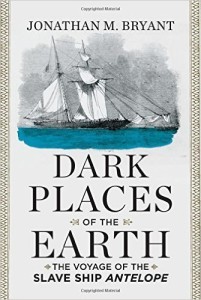 of: Dark Places of the Earth: The Voyage of the Slave Ship Antelope
of: Dark Places of the Earth: The Voyage of the Slave Ship Antelope
Author: Jonathan M. Bryant, professor of history at Georgia Southern University specializing in slavery, emancipation, and constitutional law.
Publisher: Liveright Publishing Group, a division of W.W. Norton & Company
Formats: Hardcover, eBook, Audio CD
Details: 376 pages with 47 pages of notes. Includes some drawings and photographs.
Johnathan Bryant does a very skilful job of shedding a bright light on a little known but extremely important event in American History. Meticulously researched, the author’s efforts show in graphic detail the plight of over 300 Africans brought to the shores of the United States by the slave ship Antelope. And in the process, he lays before readers the intricate legal wrangling that ended in Supreme Court rulings solidifying the rights of property over the natural rights of human beings, rulings that lasted for thirty-five years.
As the book title indicates, this is a dark tale, one that throws readers directly into the horrors of the slave trade and the institution of slavery as practiced during the early years of the republic. Author Bryant’s simple statistics of what remained of the Antelope’s starving and diseased human cargo when it finally arrived in Savannah, Georgia during the year 1820 give stark and concise testimony to the brutality of such transatlantic profit seeking voyages:
• Out of 331 people originally captured and put aboard the Antelope, only 258 remained alive – a 22% loss of life.
• 83% of the captives were under the age of 20.
• The average age of all the captives was 14.
• 106 were between the ages of 5 and 10.
• 8 were between the ages of 2 and 5. 2 and 5 (that is an intentional factual repeat)
For almost eight years after landing in the United States, the captives languished in servitude on Savannah plantations as if they had been bought and sold as slaves, which they were not. And after those eight years, most of those people who actually survived were legally enslaved and sent to Florida by Supreme Court rulings. Only a small group ended up being sent back to Africa where they faced severe hardships, disease and attack by the nearby native population.
Jonathan Bryant’s story of the multiple legal battles that caused the captives to wait nearly eight years is fascinating and so full of detail as to be almost overwhelming. But true to presenting the facts as he found them, the author offers readers these historical events in step-by-step fashion in order to leave no doubt about what happened. His 47 pages of notes at the end of the book speak to the incredible depth of his research.
One of the most telling scenes is when the Antelope case finally arrives at the Supreme Court of the United States in 1825, five years after the captives set foot in Georgia. The legendary John Marshall was Chief Justice and four of the justices were slave owners. The attorney for the supposed owners of the captives, Spanish and Portuguese citizens, was a slave owner as well. Enter the attorney for the government of United States trying to free the captives, Francis Scott Key. The same F.S. Key of the Star-Spangled Banner fame had slaves of his own. Slave ownership stood out on that day as a vivid yet unofficial finger pressing on the scales of justice.
This author’s work is beautifully organized, well written and thoroughly documented. It is an important scholarly work and should be read by those deeply interested in slavery, the slave trade, constitutional law, international law, and American politics during the first quarter of the 19th century.
Useful Links
YouTube video – interview with the author

